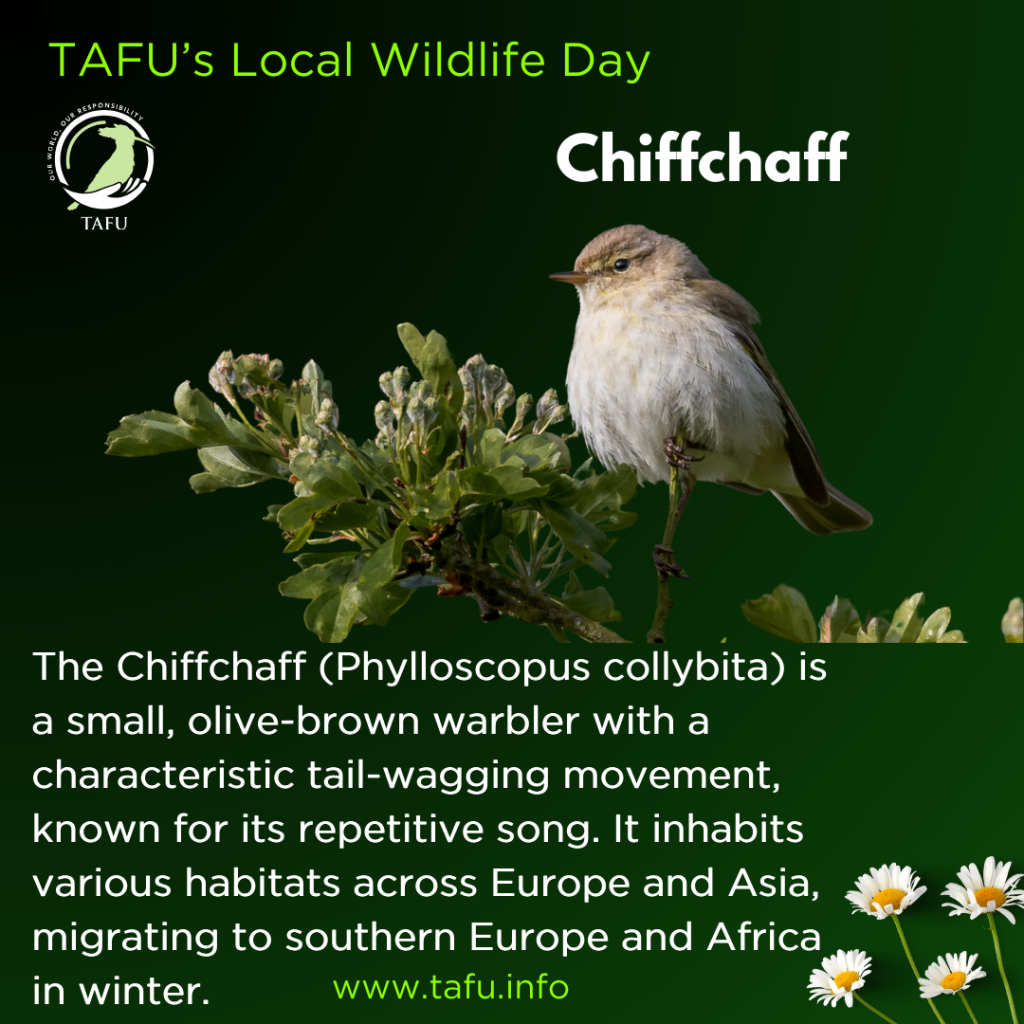Chiffchaff
As part of the countdown to TAFU’s Local Wildlife Day on the 11th of July – Species no. 29.
Stay tuned – 14 more days and 14 more species until then!
The Chiffchaff (Phylloscopus collybita) is a small leaf warbler, measuring about 10-12 cm in length with a wingspan of 15-20 cm. It has olive-brown upperparts, a paler underbody, and a pale supercilium (eyebrow stripe). The legs are usually dark, which helps differentiate it from similar species like the Willow Warbler. Both sexes look similar, though juveniles tend to have a more brownish colour.
Chiffchaffs are insectivorous, feeding primarily on small insects and spiders, which they pick from foliage or catch in flight. They are highly active birds, often seen flitting through trees and shrubs with their characteristic tail-wagging movement. Their song, a repetitive “chiff-chaff, chiff-chaff,” is one of the earliest signs of spring and is used to establish territory and attract mates.
They breed in a variety of habitats including woodlands, gardens, and parks. The breeding season typically runs from May and June. The female builds a dome-shaped nest low in dense vegetation, where she lays 5-6 eggs. These are incubated for about 2 weeks, and the chicks fledge roughly two weeks after hatching. Chiffchaffs can have two broods per season.
Chiffchaffs migrate to southern Europe and North Africa during the winter. They are one of the first warblers to arrive back in their breeding areas in the spring. Their population is stable and widespread, categorised as Least Concern by conservation authorities. Maintaining diverse and insect-rich habitats in our green spaces is crucial for chiffchaffs.

